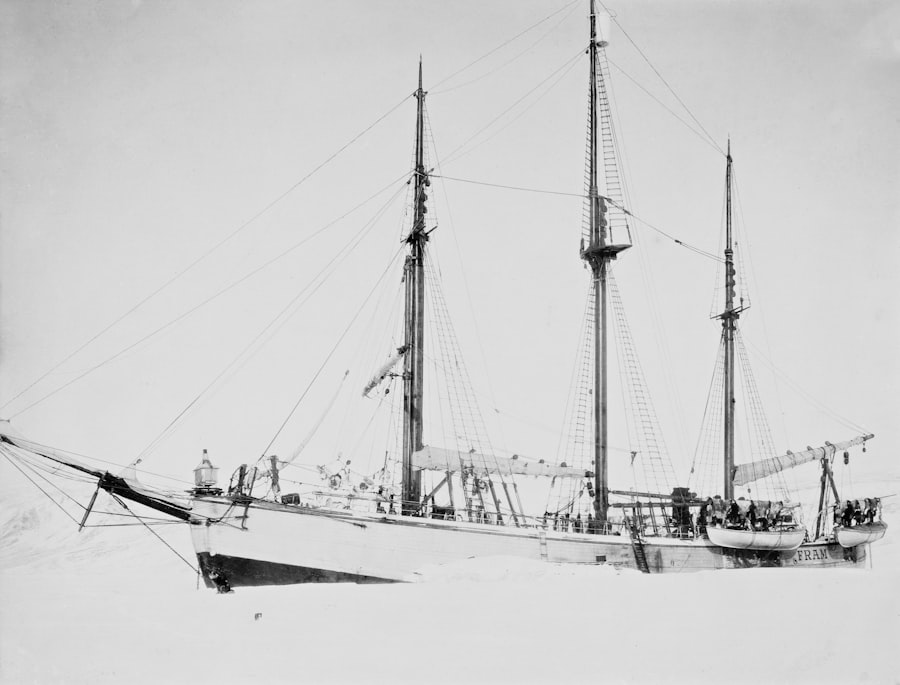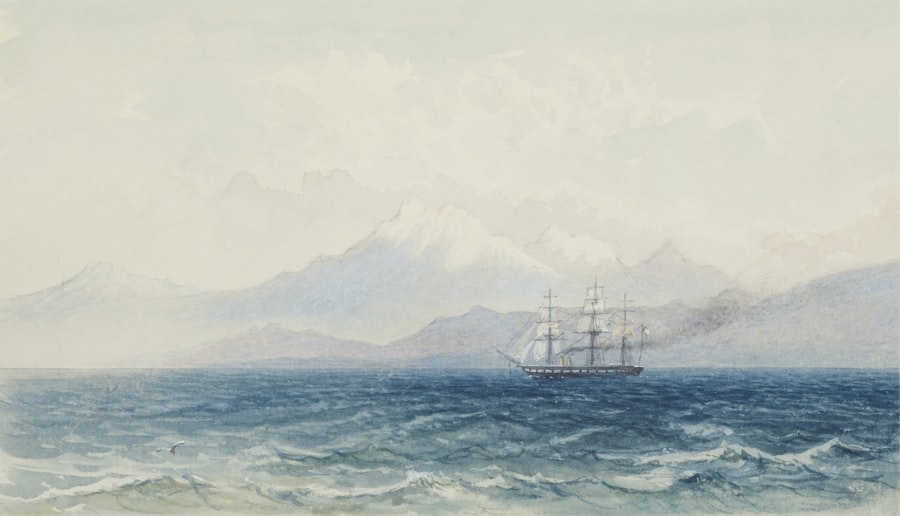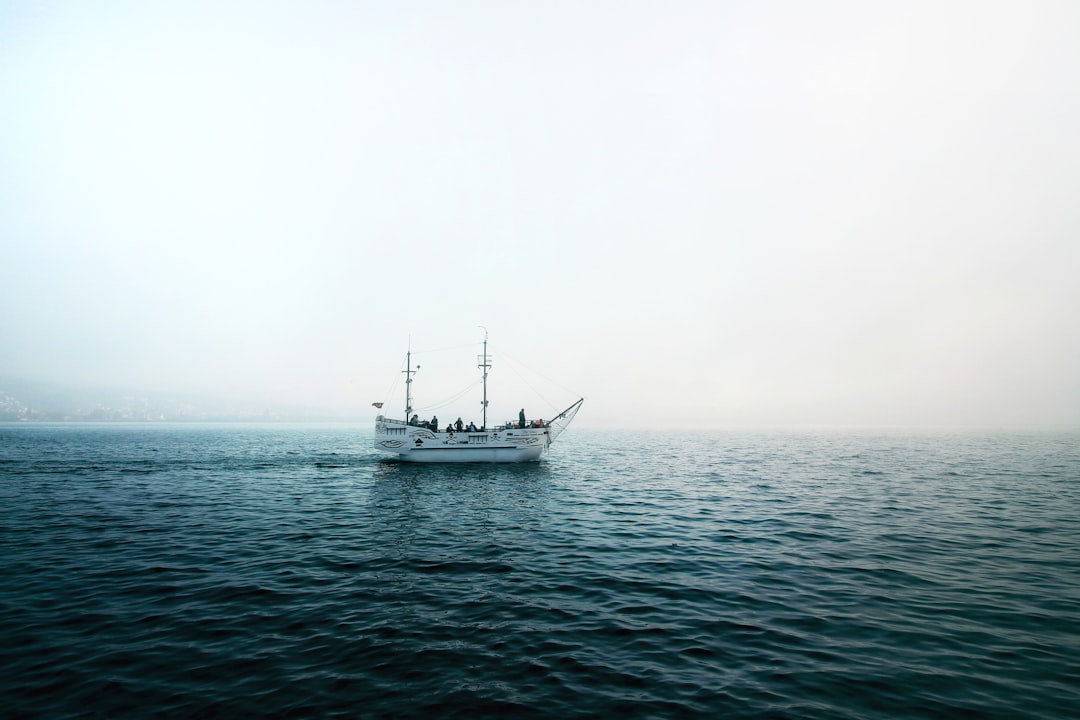The Drake Passage, a body of water situated between the southern tip of South America and Antarctica, is renowned for its tumultuous seas and significant geographical importance. Spanning approximately 800 kilometers (500 miles) in width, it serves as a critical conduit for ocean currents and marine life. The passage is named after Sir Francis Drake, the English explorer who navigated these waters in the late 16th century.
Its strategic location not only connects the Atlantic and Pacific Oceans but also plays a vital role in global climate regulation by facilitating the movement of cold and warm water masses. The Drake Passage is often characterized by its unpredictable nature, with conditions that can change rapidly. This unpredictability is largely due to the confluence of various oceanic currents, including the Antarctic Circumpolar Current, which flows unimpeded around Antarctica.
The passage is notorious for its rough seas, which can pose significant challenges for vessels attempting to traverse it. Despite these challenges, the Drake Passage remains a popular route for adventurers and researchers alike, drawn by the allure of its wild beauty and the promise of exploration.
Key Takeaways
- The Drake Passage is a narrow body of water between South America’s Cape Horn and the South Shetland Islands of Antarctica, known for its rough seas and strong winds.
- The weather in the Drake Passage is unpredictable, with frequent storms and high winds, making it one of the roughest sea crossings in the world.
- The Drake Passage is home to a diverse range of wildlife, including whales, seals, and numerous species of seabirds.
- The historical importance of the Drake Passage lies in its role as a major route for early explorers and as a gateway to Antarctica.
- Navigational challenges in the Drake Passage include icebergs, strong currents, and the potential for extreme weather conditions, requiring skilled and experienced crew.
Weather and Climate in the Drake Passage
The weather in the Drake Passage is notoriously volatile, with conditions that can shift from calm to stormy within a matter of hours. The region experiences a maritime climate, influenced by the surrounding oceans and the icy expanse of Antarctica. Winds can reach gale force, creating waves that can tower over ten meters (33 feet) high.
This unpredictability makes it essential for those planning to cross the passage to stay informed about weather patterns and forecasts. Temperature variations are also significant in the Drake Passage. During the summer months, temperatures can hover around 5 to 10 degrees Celsius (41 to 50 degrees Fahrenheit), while winter months can plunge well below freezing.
The presence of icebergs and sea ice further complicates navigation during certain times of the year. Understanding these climatic conditions is crucial for ensuring safe passage and maximizing the experience for those who venture into this challenging yet breathtaking region.
Wildlife in the Drake Passage

The Drake Passage is not only a challenging route for sailors but also a thriving ecosystem teeming with diverse wildlife. The nutrient-rich waters support a variety of marine species, making it a prime location for observing wildlife in its natural habitat. Among the most notable inhabitants are various species of whales, including humpback, minke, and orca whales, which are often spotted breaching the surface or feeding in the nutrient-dense waters.
In addition to whales, the passage is home to an array of seabirds, such as albatrosses and petrels, which glide gracefully over the waves. These birds are drawn to the area due to the abundance of fish and krill, which serve as their primary food sources. The sight of these majestic creatures soaring above the turbulent waters adds to the allure of crossing the Drake Passage, providing travelers with unforgettable moments of connection to nature.
Historical Importance of the Drake Passage
| Event | Year | Significance |
|---|---|---|
| First recorded crossing | 1616 | By the Dutch navigator Willem Schouten |
| Scientific exploration | 1839 | Charles Darwin’s voyage on the HMS Beagle |
| Maritime trade route | 19th century | Establishment of the passage as a key route for global trade |
| Antarctic research | 20th century | Importance for scientific exploration and understanding of climate change |
Historically, the Drake Passage has played a pivotal role in maritime exploration and trade. Its discovery opened new routes for explorers seeking to navigate between the Atlantic and Pacific Oceans. Sir Francis Drake’s expedition in the late 1500s marked one of the first recorded crossings of this treacherous waterway, paving the way for future explorers and traders.
The passage became a vital link for ships traveling to and from the Americas, facilitating trade and cultural exchange. In addition to its role in exploration, the Drake Passage has also been significant in scientific research. The unique oceanographic conditions present in this region have attracted scientists studying climate change, marine biology, and ocean currents.
The passage serves as a natural laboratory for understanding global environmental changes, making it an area of ongoing interest for researchers worldwide.
Navigational Challenges in the Drake Passage
Navigating the Drake Passage presents numerous challenges due to its unpredictable weather patterns and strong currents. The combination of high winds and large waves can create hazardous conditions for vessels of all sizes. Mariners must be well-prepared and equipped with advanced navigational tools to safely traverse this formidable stretch of water.
The presence of icebergs and shifting sea ice further complicates navigation, requiring constant vigilance and adaptability. Additionally, the lack of sheltered harbors along the passage means that vessels must be self-sufficient and capable of handling emergencies at sea. This reality underscores the importance of thorough planning and preparation before embarking on a journey through these waters.
Experienced crews often emphasize the need for comprehensive training in seamanship and emergency response to ensure safety during transit.
Safety Precautions for Crossing the Drake Passage

Given its reputation for rough seas and unpredictable weather, safety precautions are paramount when crossing the Drake Passage. Mariners are advised to conduct thorough pre-voyage checks on their vessels, ensuring that all equipment is functioning properly and that safety gear is readily available.
Monitoring weather forecasts is another critical aspect of ensuring safety during transit. Many experienced sailors recommend waiting for favorable weather windows before attempting to cross. Additionally, maintaining open communication with other vessels in the area can provide valuable insights into current conditions and potential hazards.
By prioritizing safety measures and remaining vigilant throughout the journey, sailors can navigate this challenging passage with greater confidence.
Choosing the Right Vessel for the Drake Passage
Selecting an appropriate vessel for crossing the Drake Passage is essential for ensuring a safe and comfortable journey. The ideal vessel should be sturdy enough to withstand rough seas while providing adequate amenities for passengers and crew. Many adventurers opt for ice-strengthened ships designed specifically for polar waters, as these vessels are built to handle extreme conditions.
In addition to structural integrity, factors such as size and maneuverability play a crucial role in vessel selection. Smaller ships may offer greater agility in navigating through ice-laden waters but may lack some comforts found on larger vessels. Ultimately, choosing the right vessel involves balancing safety features with passenger comfort, ensuring that travelers can enjoy their experience while remaining secure during their crossing.
Tips for a Smooth Passage Through the Drake Passage
For those embarking on a journey through the Drake Passage, several tips can help ensure a smoother experience. First and foremost, travelers should be prepared for motion sickness due to the passage’s notorious waves. Bringing along seasickness medication or natural remedies can alleviate discomfort during rough patches.
Additionally, dressing in layers is advisable, as temperatures can fluctuate dramatically throughout the day. Waterproof clothing is essential to stay dry during unexpected splashes or rain showers. Staying hydrated and well-nourished is also important; travelers should take advantage of onboard meals and snacks to maintain energy levels during their journey.
Popular Destinations Beyond the Drake Passage
Beyond its own challenges and beauty, the Drake Passage serves as a gateway to some of the most breathtaking destinations on Earth. One such destination is Antarctica itself, where travelers can explore stunning landscapes filled with glaciers, icebergs, and unique wildlife. The continent offers opportunities for adventure activities such as kayaking, ice climbing, and even polar plunges into frigid waters.
Another popular destination accessible via the Drake Passage is South Georgia Island, known for its dramatic scenery and rich history related to early whaling expeditions. Visitors can witness vast colonies of king penguins and elephant seals while learning about the island’s ecological significance. These destinations provide travelers with unforgettable experiences that extend far beyond their journey through the passage.
The Future of Travel Through the Drake Passage
As interest in polar exploration continues to grow, the future of travel through the Drake Passage appears promising yet complex. Advances in technology are leading to safer vessels equipped with enhanced navigation systems and improved safety features. These innovations may help mitigate some of the challenges associated with crossing this formidable waterway.
However, increased tourism also raises concerns about environmental sustainability in this fragile ecosystem. Balancing exploration with conservation efforts will be crucial in preserving the unique biodiversity found within the passage and surrounding regions. As travelers seek out new adventures in these remote areas, responsible tourism practices will play an essential role in ensuring that future generations can experience the wonders of the Drake Passage.
Personal Accounts of Crossing the Drake Passage
Personal accounts from those who have crossed the Drake Passage often highlight both its challenges and rewards. Many travelers recount tales of treacherous seas that tested their resolve but ultimately led to awe-inspiring moments witnessing whales breaching or seabirds soaring overhead. These stories often emphasize camaraderie among passengers as they navigate shared experiences during rough weather.
Others reflect on how crossing this iconic passage has deepened their appreciation for nature’s power and beauty. The sense of accomplishment felt upon successfully traversing such a formidable stretch of water resonates deeply with adventurers seeking connection with both themselves and the natural world around them. These personal narratives serve as reminders that while crossing the Drake Passage may be fraught with challenges, it also offers unparalleled opportunities for discovery and reflection amidst one of Earth’s last great frontiers.
The Drake Passage, a notorious stretch of water between the southern tip of South America and Antarctica, is often avoided by ships due to its treacherous conditions. Known for its unpredictable weather, strong currents, and massive waves, the passage presents significant challenges to even the most experienced mariners. Ships often opt for alternative routes to ensure the safety of their crew and cargo. For more insights into the dangers and history of the Drake Passage, you can read a related article on the topic by visiting MyGeoQuest. This resource provides a comprehensive overview of why this passage is considered one of the most dangerous maritime routes in the world.
WATCH NOW! Drake Passage: Earth’s Deadliest Waters Revealed
FAQs
What is the Drake Passage?
The Drake Passage is the body of water between the southern tip of South America and the northern tip of the Antarctic Peninsula. It connects the southwestern part of the Atlantic Ocean with the southeastern part of the Pacific Ocean.
Why do ships avoid the Drake Passage?
Ships often avoid the Drake Passage due to its reputation for having some of the roughest seas in the world. The convergence of the Atlantic, Pacific, and Southern Oceans in this narrow stretch of water can lead to strong winds and large waves, making it a challenging and potentially dangerous route for ships to navigate.
Are there alternative routes to the Drake Passage?
Yes, there are alternative routes that ships can take to avoid the Drake Passage. One common alternative is to travel around the southern tip of South America through the Beagle Channel and around Cape Horn. Another option is to take a longer route through the Panama Canal and around the northern tip of South America.
What are the potential dangers of navigating the Drake Passage?
The Drake Passage is known for its unpredictable and severe weather conditions, including strong winds, high waves, and rough seas. These conditions can pose significant risks to ships, especially smaller vessels, and can make navigation challenging and potentially hazardous.
Are there any benefits to navigating the Drake Passage?
Despite its reputation for rough seas, the Drake Passage is also known for its rich marine life and unique ecosystems. Some adventurous travelers and researchers may choose to navigate the passage in order to experience its natural beauty and observe the diverse wildlife that inhabits the region.
